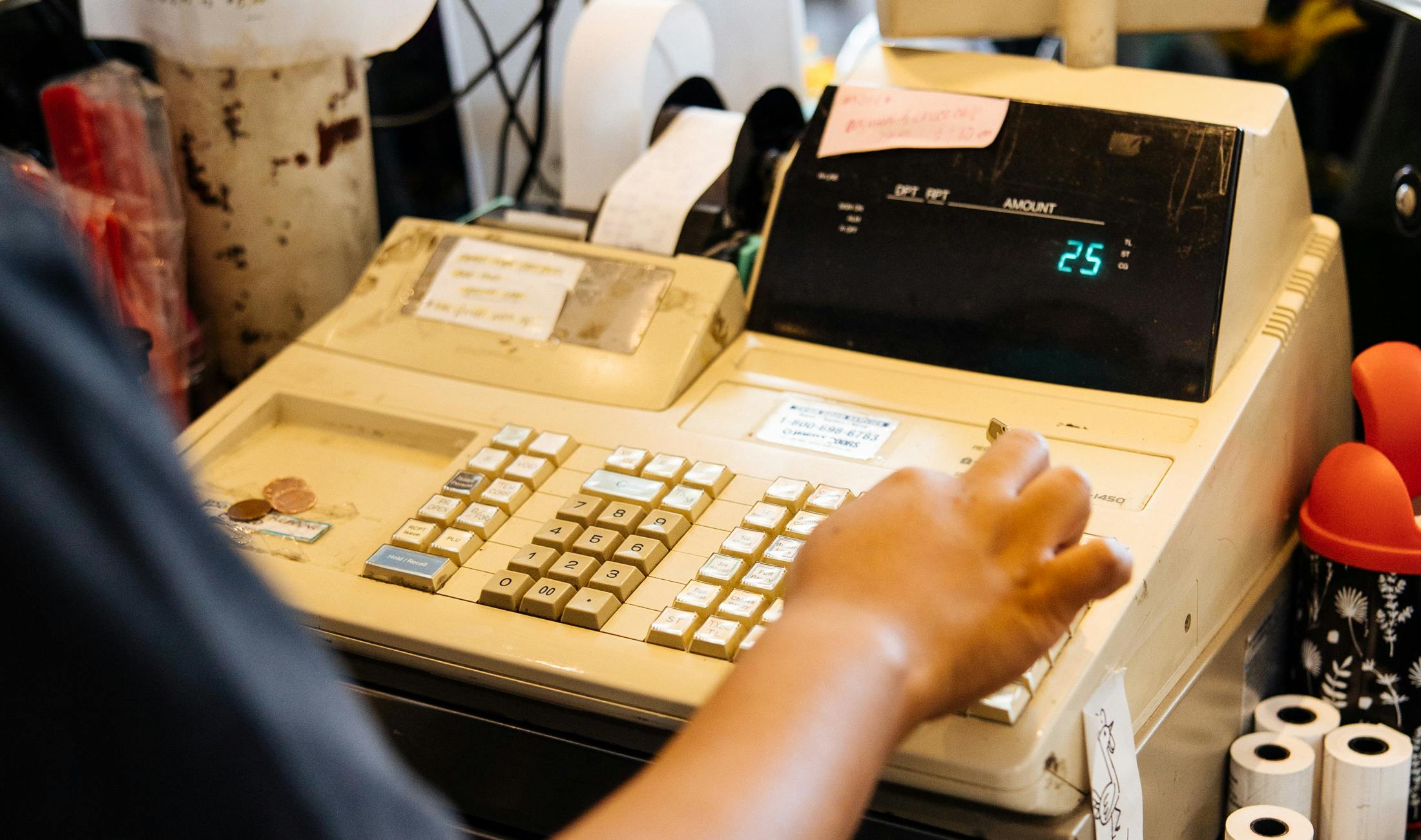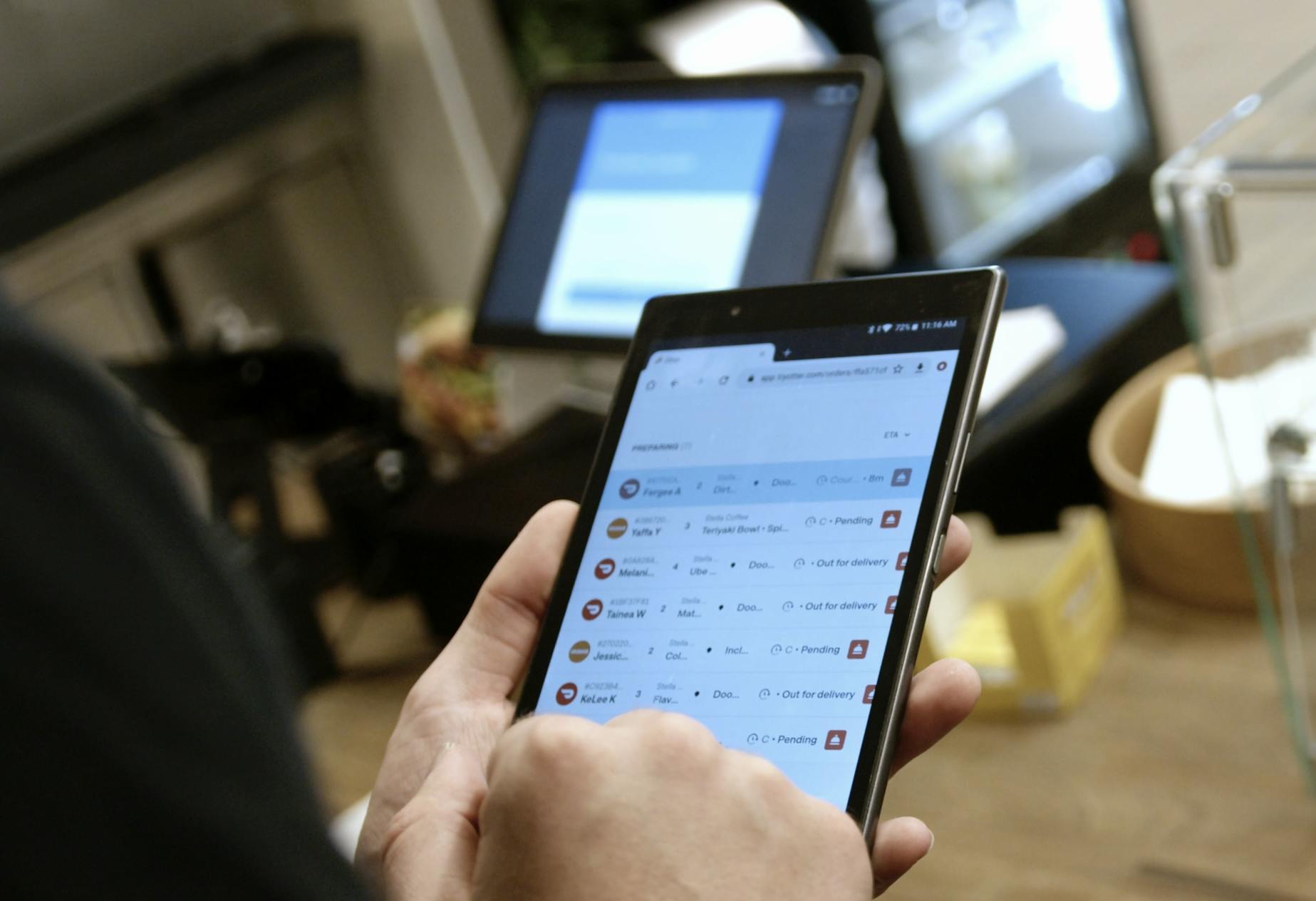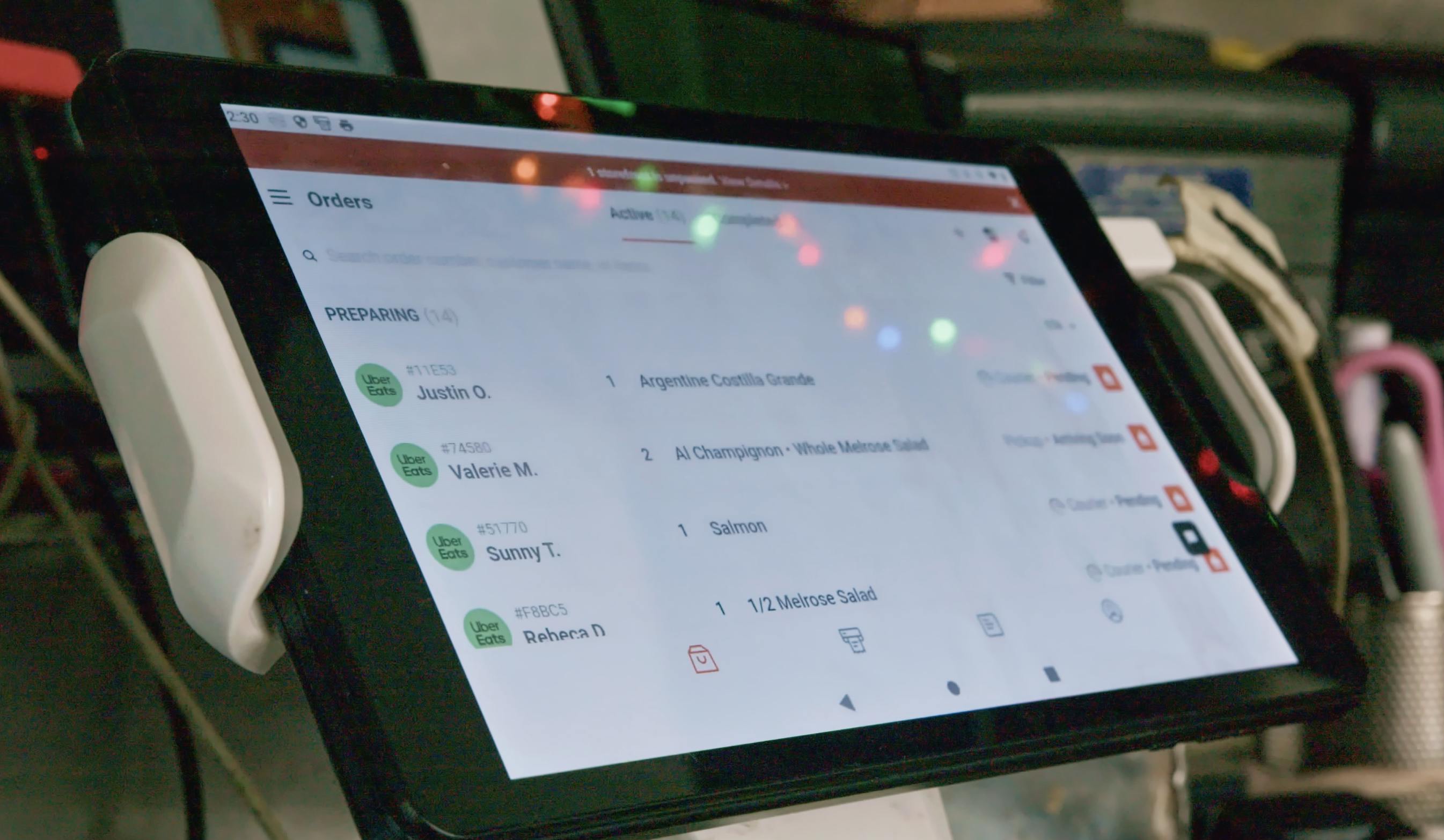
Table of contents
Restaurant Point-of-Sale (POS) systems have come a long way since their inception, transforming from simple cash registers to sophisticated, feature-rich platforms that streamline operations in the hospitality industry.
According to the April 2023 Restaurant Tech Outlook by Nation’s Restaurant News, restaurant POS systems are among the top three technology investments that restaurant owners are most likely to look into.
POS systems have revolutionized the way restaurants manage everything, from order taking to inventory management and even guest loyalty. The POS of the future is one that offers a long list of capabilities beyond processing orders, making it an attractive investment for restaurant owners seeking to improve their operations and meet the changing needs of their customers.
Delve into the fascinating timeline of the POS system below, exploring its origins, evolution, and key milestones that have shaped it into an essential management tool for your restaurant today!

1879: James Ritty’s Mechanical Cash Register
The journey of the POS system can be traced back to the invention of the cash register, a mechanical device designed to securely store cash and record transactions. In 1879, James Ritty, a Dayton, Ohio saloonkeeper, patented the first mechanical cash register to combat employee theft. Dubbed "Ritty's Incorruptible Cashier," the device used metal taps and a clock-like mechanism to record sales and store cash securely. Although it lacked the ability to calculate totals, the invention marked a significant milestone in the evolution of the POS system.
1884: National Cash Register Company
In 1884, John H. Patterson, alongside other investors, bought Ritty's patent rights and founded the National Cash Register (NCR) company. Patterson introduced innovations that dramatically improved the usability and functionality of cash registers. Some of these innovations included the incorporation of a paper roll to record transactions — what we know and love today as the receipt! — and an electric motor to power the cash drawer.
1900s: Cash Register Integrations
Under Patterson's leadership, NCR emerged as a dominant player in the cash register industry. By the early 1900s, the company had introduced cash registers with integrated adding machines, allowing for automatic calculations of sales totals. This changed the game for businesses and restaurants, as it streamlined the transaction process and reduced the likelihood of human error.
1960-1970: First Electronic Cash Registers
The advent of electronics and computing technology marked a new era in the history of restaurant POS systems. This period witnessed the transformation from mechanical cash registers to electronic ones, which would eventually give rise to the modern, feature-rich POS systems we know today.
In the late 1960s and early 1970s, IBM and NCR introduced the first electronic cash registers, leveraging advancements in computing technology to enhance transaction processing and data management capabilities. IBM's 3650 and 3660 Store Systems, launched in 1973, were among the earliest electronic cash registers, designed for supermarkets and other high-volume food service establishments.
Early electronic cash registers featured programmable logic, magnetic stripe card readers, and limited data storage capabilities, which allowed for more efficient and accurate transaction processing, inventory tracking, and sales reporting in restaurants.

1970-1980: Computerized POS Systems
The introduction of microprocessors and personal computers in the late 1970s and early 1980s provided the foundation for the development of computer-based POS systems. These systems combined the power of computing technology with the essential features of electronic cash registers, creating a new generation of devices that were faster, more versatile, and highly adaptable to a wide range of restaurant needs.
Computer-based POS systems offered significant advantages over their electronic counterparts, such as increased processing power, greater customization options, and the ability to integrate with other software applications. This allowed restaurants to automate various tasks, streamline their operations, and access detailed sales and inventory data with ease.
1990-2000: Windows-based POS Systems
In the early 1990s, the launch of Microsoft Windows-based POS systems made it possible for restaurants to use off-the-shelf hardware and software, reducing the cost and complexity of implementing and maintaining POS systems. This marked a significant shift in the industry, as it allowed small- and medium-sized businesses to access advanced POS solutions that were previously limited to large enterprises.
2000-2010: Cloud-based POS Systems
The emergence of the internet and advancements in networking technologies during the late 1990s and early 2000s paved the way for the development of cloud-based POS systems. These systems introduced a host of unprecedented capabilities, including remote data access, real-time inventory management, and seamless integration with other online services, as well as with multiple locations. As a result, restaurants gained access to a powerful and cost-effective solution for streamlining their operations.
2010-2020: Mobile POS Systems
With the widespread adoption of smartphones and tablets in the late 2000s and early 2010s, mobile POS solutions began to gain traction in the restaurant industry. Mobile POS systems offer clear advantages over traditional ones, such as flexibility, faster service, and improved customer engagement. These handheld devices let staff take orders and process payments on-the-go, and integrate seamlessly with other mobile restaurant technologies like digital loyalty programs, mobile payment solutions, and waitlist management apps.
2020s and beyond: The Future of POS Systems
As we enter the third decade of the 21st century, restaurant POS systems have continued to evolve, incorporating cutting-edge technologies and offering a wide range of innovative features designed for the diverse needs of businesses across the hospitality sector.
Some of the most notable breakthroughs in 2020s POS technology include the increased use of artificial intelligence (AI) and machine learning for menu optimization and inventory management, the integration of augmented and virtual reality (AR/VR) experiences for interactive menu displays, and the development of advanced biometric and contactless payment options. These advancements have enabled POS systems to become more powerful, efficient, and adaptable than ever before, making them indispensable tools for restaurant owners and operators.
The next era in restaurant POS history is here.

The history of POS systems is marked by relentless innovation and technological progress. From their modest origins as mechanical cash registers to the refined, feature-packed tools we know today, POS systems have been instrumental in revolutionizing the restaurant industry. The past has shown us the incredible progress POS systems have made through the years, but let’s face it — the technology of yesterday cannot meet the needs of your restaurant today.
The good news is, the future of POS systems is bright. In an omni-channel channel world that requires you to balance on-premise and off-premise operations, Otter has a solution designed for your needs. Our restaurant POS system consolidates your tech stack into a single interface and lets you manage in-store, online and takeout orders with 24/7 reliability.







